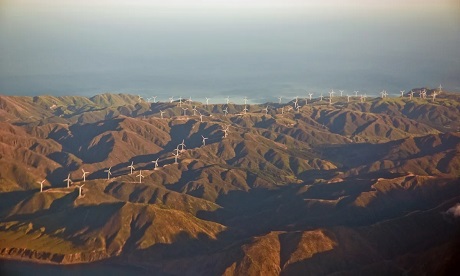It’s just possible that New Zealand has passed peak climate pollution. The country’s greenhouse gas emissions are dropping, according to newly-released statistics.
As a country, our emissions’ decline, initially catalysed by the Covid-19 movement restrictions, continued after the restrictions were lifted.
Figures Statistics New Zealand (Stats NZ) released on Thursday show our country’s climate pollution continued to fall through all of 2022.
In fact, the December 2022 quarter delivered the lowest figure in at least nine years, apart from the first Covid lockdown period, Stats NZ reported on Thursday.
While these reductions signal progress, the pace of decline is yet to meet New Zealand’s climate objectives.
However, it clearly denotes a bend in the emissions curve as the nation strives towards a net-zero economy, says climate change reporter Marc Daalder.
Key report findings
Stats NZ report shows:
- Persistent low emission levels in 2020 and 2021, suggesting the initiation of a long-term downward trend
- December 2022 emissions settled at 18.4 million tonnes — the lowest since the data’s commencement in March 2014, other than the June 2020 lockdown period
- Annual emissions, after peaking in 2006, plateaued until 2019 which witnessed the third-highest levels on record. But with the current trends, those peaks seem less likely to recur
Despite the differences in data collection methodology, these provisional figures from Stats NZ serve as a more timely gauge of New Zealand’s decarbonisation efforts compared to the official annual reports.
A sector-by-sector review showed emissions generally declined across the board. The electricity sector in particular witnessed a significant drop in carbon emissions. This is attributed to reduced coal consumption which hit a 32-year low.
Concurrently, wind and solar energy production reached unprecedented levels.
The exceptions to this general emissions decline are in the transport, service industries and mining sectors.
Transport emissions saw an uptick of 852,000 tonnes from 2021 figures, totalling 13 million tonnes in 2022. This however is still below the 15 million tonnes reported before the pandemic in 2019.
While the overarching trend points towards a reduction, sporadic hikes in emissions, especially during low hydroelectric production phases, remain a concern, Daalder says.
Government view
The Government is actively exploring sustainable alternatives to address sporadic emission hikes.
With current global shifts and domestic policies favouring decarbonisation, reverting to high emission levels appears challenging.
The focal point now shifts from direction to the speed of emission reductions, Daalder says.
Reflecting on New Zealand’s progress, Kevin Hague, former CEO of Forest & Bird, compares New Zealand’s climate journey to steering an oil tanker: slow to initiate but steadily gaining momentum once directed.
As Hague says, “The tanker has turned – now we just have to get it to port.”
The key question now is not the direction of travel but the pace.
Source
Additional reading
News category: New Zealand.




